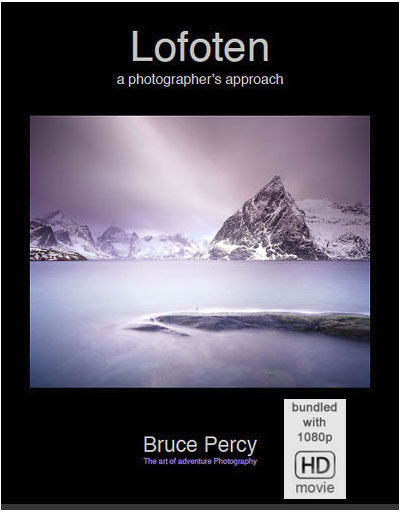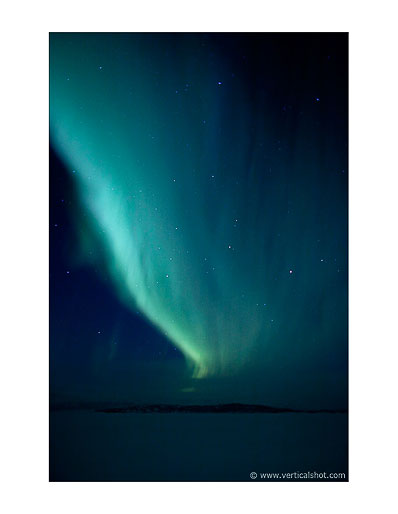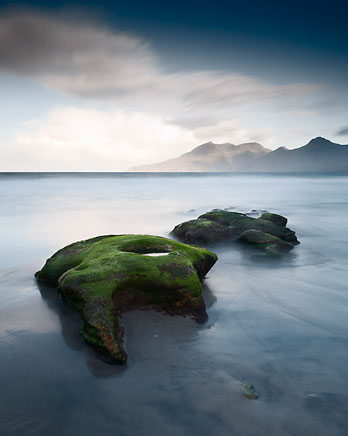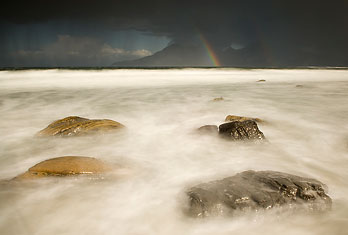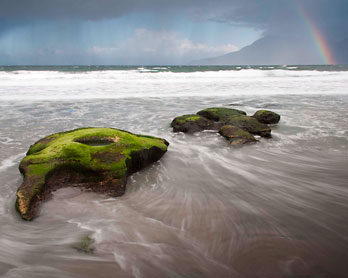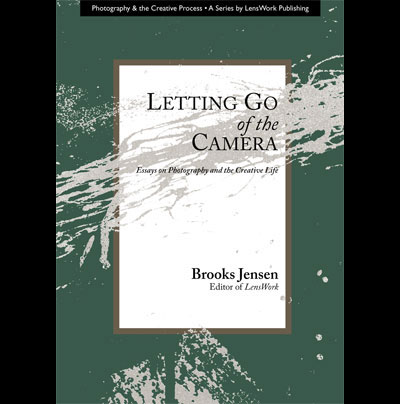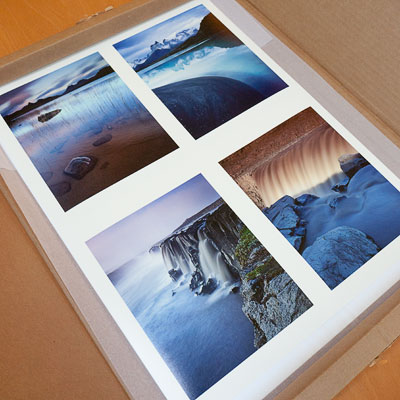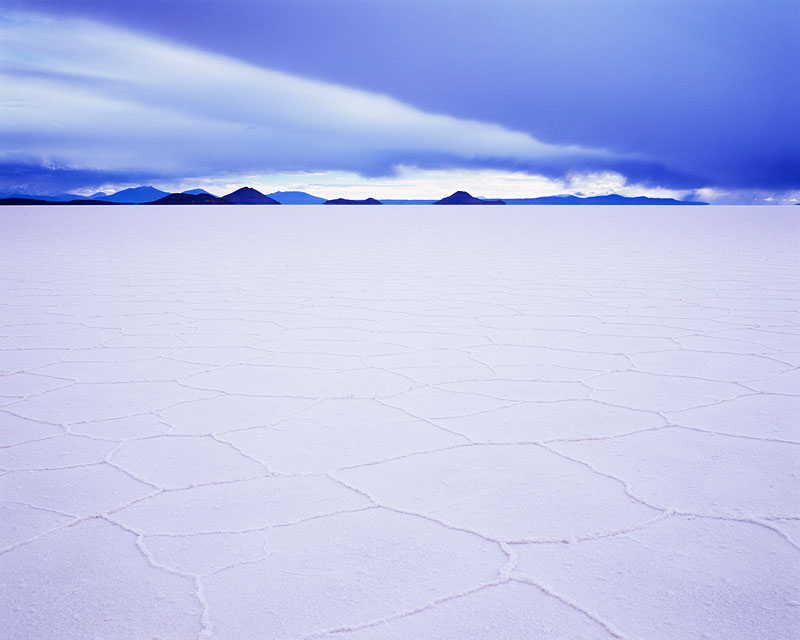Well I've been home for a few days now, from what turned out to be perhaps the most awful trip I've experienced to date. Everything seemed to go terribly wrong, all starting with getting a chest infection from the moment I landed in Iceland. They are also experiencing the coldest summer since 1958. It was cold. Plus, I have to say that going during the longest days of the year is not to be advised from a light / photographer's point of view. It never really got into Twilight at any point and I felt that the light never really got sweet enough to photograph in. Just a shade too close to midday light for my liking, even at midnight or 2am.
However, I did stumbled out of my tent at Jokulsarlon (glacial lagoon) to make some photos of the ice bergs crashing on the black sand at the coast line. I must admit that I felt like hell while I was out there making pictures and retreated back to my tent after only about half an hour. I was feeling so crappy, that I completely lost the will to make any concentrated effort on my photography.
Strangely, I've come home with around 17 rolls of film shot, and I suspect that there will be some decent images in there, despite my own interpretation of how bad the trip was.
So I'm wondering if I actually managed to make some good images after all? Being ill definitely made me feel less enthused to make images and I often found myself feeling very disconnected from what I was there to shoot. But I rarely make an image if I'm feeling I'm just going through the motions, or have little interest in what I'm doing. So how come I've managed to shoot 17 rolls of film?
My theory is that perhaps there were those moments of inspiration. But because I'm so clouded by an overall impression of how bad I felt for most of the time, I've lost sight to those sparse moments I had when I felt really good about what I was doing?
Time will tell. I've posted off my films at the moment and hope to have some to work on early next week. I'll post some on the blog if I feel inclined to do so.
Anyway, It's back to work for me at the moment. I've got a lot going on this month with the Quark Express file being created for my forthcoming book this July, and I'm busy proofing the images for the book at home while the text is now finally being proofed by someone (after a few false starts at trying to get it checked over by several people this year). So things now feel like they're going ahead.


